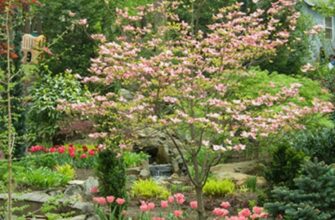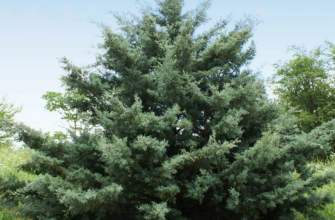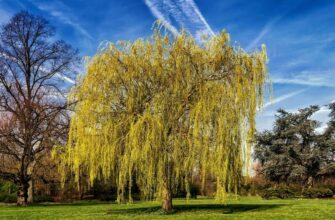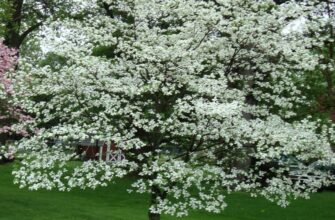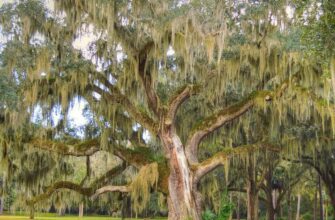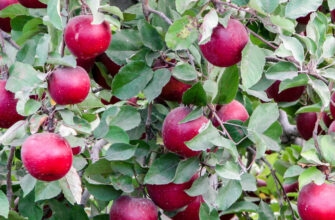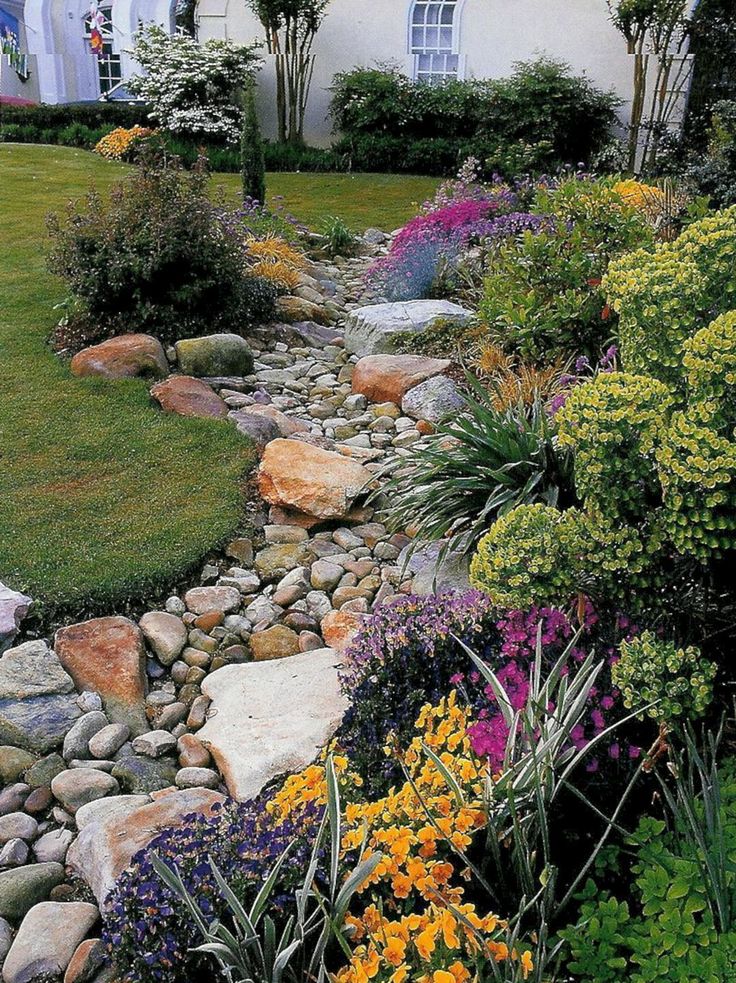
- Tree and Shrub Rain Garden Design
- Benefits of Rain Gardens
- Planning a Tree and Shrub Rain Garden
- Choosing the Right Location for Your Rain Garden
- Designing Your Tree and Shrub Rain Garden
- Selecting Trees and Shrubs for Your Rain Garden
- Preparing the Soil for Your Rain Garden
- Installing a Tree and Shrub Rain Garden
- Maintaining Your Rain Garden
- Watering and Irrigation in Rain Gardens
- Mulching Your Tree and Shrub Rain Garden
- Controlling Weeds in Rain Gardens
- Dealing with Pests and Diseases in Rain Gardens
- Attracting Wildlife to Your Rain Garden
- Rain Garden Design Ideas and Inspiration
- FAQ:
- What is a tree and shrub rain garden?
- How can I create a beautiful and sustainable tree and shrub rain garden design?
- What are the benefits of a tree and shrub rain garden?
Tree and Shrub Rain Garden Design
A tree and shrub rain garden is a thoughtful and eco-friendly way to enhance the beauty of your outdoor space while also helping to manage stormwater runoff. By strategically placing trees and shrubs in a designated area, you can create a visually stunning garden that also serves an important environmental purpose.
When designing your tree and shrub rain garden, it is important to consider the specific needs of the plants you choose. Some trees and shrubs are better suited for wetter conditions, while others prefer drier soil. By selecting the right species, you can ensure the long-term success of your garden.
In addition to selecting the appropriate plants, it is also important to consider the layout and design of your rain garden. A well-designed garden will not only be aesthetically pleasing, but also functional in managing stormwater. By properly grading the area and incorporating features such as swales and berms, you can create a garden that effectively captures and filters rainwater.
Furthermore, incorporating sustainable practices into your rain garden design can further enhance its environmental benefits. For example, using native plants can help support local ecosystems and attract beneficial wildlife. Additionally, using organic mulch and avoiding the use of pesticides and herbicides can help create a healthier and more sustainable garden.
Benefits of Rain Gardens
A rain garden is a specially designed garden that helps to manage and control rainwater runoff. It is typically planted with a variety of trees and shrubs, which not only enhance the beauty of the garden but also provide numerous benefits.
One of the key benefits of rain gardens is their ability to reduce stormwater runoff. When it rains, water can easily run off impermeable surfaces like roofs and driveways, causing flooding and erosion. However, rain gardens act as natural filters, allowing water to slowly percolate into the ground. This helps to recharge groundwater supplies and reduces the strain on stormwater management systems.
Another benefit of rain gardens is their ability to improve water quality. As rainwater flows through the garden, it is naturally filtered by the plants and soil. The roots of the trees and shrubs help to absorb and trap pollutants, preventing them from entering nearby water bodies. This helps to protect local ecosystems and improve the overall health of the environment.
In addition to their environmental benefits, rain gardens also offer aesthetic advantages. The trees and shrubs in a rain garden can provide shade and privacy, creating a more enjoyable outdoor space. They also attract birds, butterflies, and other wildlife, adding to the beauty and biodiversity of the garden.
Furthermore, rain gardens can help to conserve water. By capturing and storing rainwater, they reduce the need for irrigation, especially during dry periods. This not only saves water but also reduces the reliance on municipal water supplies, making rain gardens a sustainable choice for landscaping.
In conclusion, rain gardens offer a multitude of benefits. They help to manage stormwater runoff, improve water quality, enhance the beauty of outdoor spaces, attract wildlife, and conserve water. By incorporating trees and shrubs into rain garden designs, individuals can create a beautiful and sustainable landscape that benefits both the environment and the community.
Planning a Tree and Shrub Rain Garden
When planning a tree and shrub rain garden, it is important to consider the specific needs of the trees and shrubs you will be planting. Different species have different requirements for sunlight, soil moisture, and drainage. Research the specific needs of the trees and shrubs you are interested in planting to ensure they will thrive in your rain garden.
Another important consideration when planning a tree and shrub rain garden is the size and layout of the garden. Determine the available space and the number of trees and shrubs you want to include. Consider the mature size of the trees and shrubs and ensure they will have enough space to grow and flourish.
When selecting trees and shrubs for your rain garden, choose species that are native to your region. Native plants are adapted to the local climate and soil conditions, making them more likely to thrive in your garden. They also provide important habitat for native wildlife and support local ecosystems.
In addition to selecting the right trees and shrubs, consider the overall design and aesthetics of your rain garden. Arrange the trees and shrubs in a visually pleasing way, taking into account their different heights, colors, and textures. Add other elements such as rocks, mulch, or a pathway to enhance the beauty of the garden.
Finally, when planning a tree and shrub rain garden, think about the water management aspect. Ensure that the garden is designed to effectively capture and retain rainwater, preventing erosion and runoff. Use mulch and other organic materials to improve soil moisture retention and drainage. Consider using a rain barrel or other water harvesting system to supplement the water needs of the trees and shrubs.
By carefully planning your tree and shrub rain garden, you can create a beautiful and sustainable outdoor space that benefits both the environment and your own enjoyment.
Choosing the Right Location for Your Rain Garden
When designing a rain garden, one of the most important considerations is choosing the right location. The location of your garden will determine its success in managing stormwater runoff and supporting the growth of trees and shrubs.
First, consider the proximity of your rain garden to your home. Ideally, it should be located at least 10 feet away from your foundation to prevent water from seeping into your basement or causing other structural issues. Additionally, make sure the garden is not located near any underground utilities or septic systems.
Next, assess the topography of your yard. Choose a location that is slightly sloped to allow water to flow naturally into the rain garden. Avoid areas with excessive slopes or depressions, as these can lead to drainage problems and erosion.
Another important factor to consider is sunlight. Select a location that receives at least six hours of sunlight per day to ensure the healthy growth of trees and shrubs. If your yard has areas with heavy shade, you may need to choose different plant species that can thrive in these conditions.
Finally, think about the size and shape of your rain garden. It should be large enough to accommodate the amount of rainwater runoff from your roof and other impervious surfaces, but not so large that it becomes difficult to maintain. A rectangular or kidney-shaped design is often recommended, as it allows for efficient water flow and planting arrangements.
By carefully considering these factors, you can choose the right location for your rain garden and create a beautiful and sustainable design that effectively manages stormwater runoff and supports the growth of trees and shrubs.
Designing Your Tree and Shrub Rain Garden
Designing a tree and shrub rain garden involves careful consideration of the specific needs and characteristics of the plants, as well as the natural drainage patterns of your landscape. By incorporating trees and shrubs into your rain garden design, you can create a beautiful and sustainable garden that helps to manage stormwater runoff and provides habitat for wildlife.
When selecting trees for your rain garden, choose species that can tolerate both wet and dry conditions. Look for trees with deep root systems that can help to absorb excess water and stabilize the soil. Consider the mature size of the tree and its growth rate to ensure it will fit well within your garden design. Additionally, select trees that provide aesthetic value and complement the overall look of your garden.
Shrubs are also an important component of a tree and shrub rain garden. They can help to filter and slow down stormwater runoff, as well as provide habitat for birds and other wildlife. Choose shrubs that are native to your region and can tolerate both wet and dry conditions. Consider the height and spread of the shrubs, as well as their flowering and foliage characteristics, to create a visually appealing garden.
When designing your tree and shrub rain garden, it’s important to consider the natural drainage patterns of your landscape. Identify areas where water tends to collect or flow during rain events, and position your garden in those locations. You can also create swales or berms to redirect and capture water, directing it towards your trees and shrubs. This will help to maximize the effectiveness of your rain garden in managing stormwater runoff.
Incorporating trees and shrubs into your rain garden design not only adds beauty to your landscape, but also provides numerous environmental benefits. By carefully selecting and placing these plants, you can create a garden that helps to manage stormwater runoff, improves water quality, and provides habitat for wildlife. So get creative and start designing your tree and shrub rain garden today!
Selecting Trees and Shrubs for Your Rain Garden
When designing a rain garden, it is important to carefully select the trees and shrubs that will be planted in the area. These plants will not only add beauty to the design, but they will also play a crucial role in the overall functionality of the rain garden.
When choosing trees for your rain garden, it is important to consider their size and root structure. Trees with deep and spreading root systems, such as willows or oaks, can help absorb a significant amount of rainwater and prevent erosion. These trees also provide shade, which can help reduce evaporation and keep the soil moist.
Shrubs are another important component of a rain garden design. They can help to filter pollutants from the rainwater, as well as provide habitat for wildlife. Native shrubs, such as serviceberry or buttonbush, are often recommended for rain gardens because they are adapted to the local climate and soil conditions.
When selecting trees and shrubs for your rain garden, it is important to consider the specific needs of your site. Factors such as sunlight, soil type, and water availability should all be taken into account. Consulting with a local nursery or landscaping professional can help ensure that you choose the right plants for your rain garden design.
Preparing the Soil for Your Rain Garden
When designing a rain garden, one of the most important factors to consider is the soil. The right soil composition can greatly enhance the effectiveness and longevity of your garden.
First, assess the existing soil in your garden. You may need to test its texture, drainage, and nutrient content. Sandy soil drains quickly, while clay soil retains water. Ideally, a rain garden should have a well-drained soil that retains some moisture but does not become waterlogged.
If your soil is primarily clay, you may need to amend it with organic matter, such as compost or leaf mold, to improve its drainage. On the other hand, if your soil is sandy, adding organic matter can help it retain moisture.
Once you have determined the texture and drainage of your soil, consider its nutrient content. A rain garden can benefit from nutrient-rich soil, which will support the growth of your shrubs and other plants. If your soil is lacking in nutrients, you can add organic fertilizers or compost to enrich it.
It’s also important to remove any existing vegetation and weeds from the area where you plan to create your rain garden. This will help prevent competition for nutrients and allow your chosen plants to thrive.
Finally, consider the depth of your rain garden. A depth of 6 to 12 inches is typically sufficient to capture and retain rainwater. However, if you have heavy clay soil or experience frequent heavy rainfall, you may need to dig deeper to ensure proper drainage.
By taking the time to prepare the soil for your rain garden, you can create an environment that supports the growth of beautiful and sustainable shrubs and plants, while effectively managing rainwater runoff.
Installing a Tree and Shrub Rain Garden
When it comes to installing a tree and shrub rain garden, careful planning and design are crucial. The first step is to choose the right location for your rain garden. Look for an area that receives a lot of rainwater runoff, such as near a downspout or at the bottom of a slope. This will ensure that your rain garden is effective in capturing and filtering rainwater.
Once you have selected the location, it is important to prepare the site properly. Start by removing any existing vegetation and digging a shallow basin for the rain garden. The basin should be about 6-8 inches deep and sloped to allow for proper drainage. You can use the excavated soil to create berms around the edges of the rain garden, which will help to contain the water.
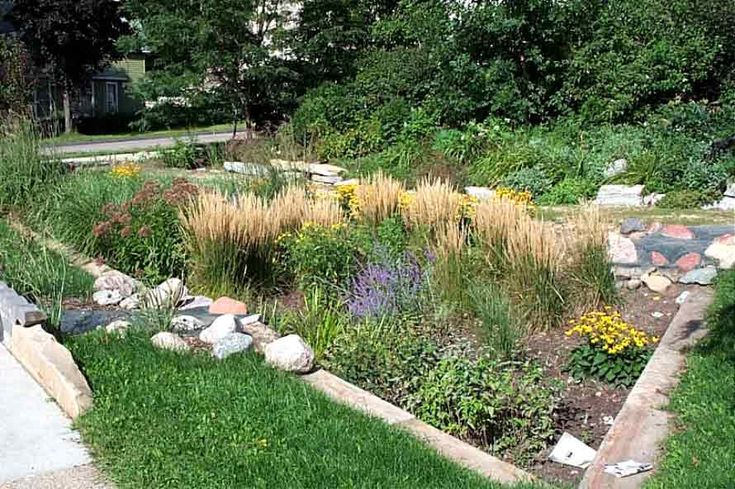
Next, it is time to choose the right trees and shrubs for your rain garden. Look for native species that are adapted to your region’s climate and soil conditions. These plants will be more likely to thrive in your rain garden and provide the greatest benefits in terms of water infiltration and habitat for wildlife. Consider planting a mix of trees and shrubs with different heights and growth habits to create a visually appealing and diverse rain garden.
When planting the trees and shrubs, make sure to dig a hole that is wide and shallow to encourage the roots to spread out and establish quickly. Backfill the hole with a mixture of the excavated soil and compost to provide the plants with the nutrients they need to thrive. Water the newly planted trees and shrubs thoroughly and mulch around them to conserve moisture and suppress weeds.
Finally, it is important to maintain your tree and shrub rain garden to ensure its long-term success. Regularly check for weeds and remove them promptly to prevent them from competing with your plants for water and nutrients. Water the rain garden during dry periods to help the trees and shrubs establish and thrive. Additionally, monitor the health of your plants and make any necessary adjustments to the design or maintenance practices to ensure that your rain garden continues to function effectively.
Maintaining Your Rain Garden
Once you have designed and planted your tree and shrub rain garden, it is important to properly maintain it to ensure its beauty and sustainability. Regular maintenance will help your garden thrive and continue to provide its many benefits, such as reducing stormwater runoff and improving water quality.
Here are some tips for maintaining your rain garden:
- Watering: While rain gardens are designed to capture and filter rainwater, it is important to water your newly planted trees and shrubs during dry spells. This will help them establish deep roots and ensure their long-term health.
- Weeding: Regularly check your rain garden for weeds and remove them promptly. Weeds can compete with your trees and shrubs for water and nutrients, so it is important to keep them under control.
- Pruning: Prune your trees and shrubs as needed to maintain their shape and promote healthy growth. Remove any dead or damaged branches to prevent disease and improve the overall appearance of your rain garden.
- Mulching: Apply a layer of mulch around your trees and shrubs to help retain moisture, suppress weeds, and improve soil health. Use organic mulch, such as wood chips or shredded bark, and avoid piling it up against the trunks of your plants.
- Fertilizing: Depending on the nutrient needs of your trees and shrubs, you may need to fertilize them occasionally. Use a slow-release, organic fertilizer and follow the instructions on the packaging to avoid over-fertilizing.
- Monitoring: Regularly monitor your rain garden for any signs of pests or disease. Look for unusual leaf discoloration, wilting, or pest damage. If you notice any issues, take appropriate action to prevent further damage.
By following these maintenance tips, you can ensure that your tree and shrub rain garden remains healthy and beautiful for years to come. Remember to also observe any specific care instructions for the tree and shrub species you have planted, as they may have unique needs.
Watering and Irrigation in Rain Gardens
Watering and irrigation are important aspects of maintaining a healthy and thriving rain garden. While the primary source of water for a rain garden is rainfall, there may be times when additional watering is necessary, especially during dry periods or in the early stages of establishing the garden.
When it comes to watering shrubs in a rain garden, it’s important to be mindful of their specific water needs. Some shrubs may require more water than others, so it’s important to choose species that are well-suited to the local climate and soil conditions. In general, it’s best to water deeply and infrequently, allowing the soil to dry out slightly between waterings to promote healthy root growth.
Irrigation systems can be a helpful tool in maintaining a rain garden, especially for larger or more complex designs. Drip irrigation systems are particularly effective, as they deliver water directly to the base of plants, minimizing waste and evaporation. These systems can be set on a timer to ensure consistent and efficient watering.
In addition to traditional watering methods, mulching can also help conserve moisture in a rain garden. Applying a layer of organic mulch around shrubs and plants can help retain moisture in the soil, reduce evaporation, and suppress weed growth. Mulch should be applied to a depth of 2-3 inches and should be kept a few inches away from the base of plants to prevent rot and disease.
Overall, watering and irrigation in a rain garden should be done with care and consideration for the specific needs of the plants and the local climate. By using efficient watering techniques, choosing appropriate plant species, and implementing mulching strategies, a beautiful and sustainable rain garden design can thrive and provide numerous benefits for the environment.
Mulching Your Tree and Shrub Rain Garden
When it comes to creating a beautiful and sustainable tree and shrub rain garden design, mulching is an important step to consider. Mulch not only enhances the aesthetic appeal of your garden, but it also provides several practical benefits.
One of the main benefits of mulching is that it helps to retain moisture in the soil. This is particularly important for rain gardens, as they are designed to capture and absorb water. By applying a layer of mulch around the base of your trees and shrubs, you can help to prevent evaporation and keep the soil moist, even during dry periods.
Another benefit of mulching is that it helps to suppress weed growth. Weeds can compete with your trees and shrubs for nutrients and water, so it’s important to keep them at bay. By applying a thick layer of mulch, you can create a barrier that inhibits weed germination and growth, reducing the need for herbicides and manual weeding.
In addition to these benefits, mulch also helps to regulate soil temperature. It acts as an insulating layer, protecting the roots of your trees and shrubs from extreme temperatures. This is particularly important in rain gardens, as the fluctuating water levels can lead to temperature changes in the soil. By mulching your garden, you can help to create a more stable and favorable environment for your plants.
When choosing mulch for your tree and shrub rain garden, opt for organic materials such as wood chips, bark, or shredded leaves. These materials not only provide the above-mentioned benefits but also break down over time, adding organic matter to the soil and improving its fertility.
To apply mulch, start by clearing any weeds or debris from the area around your trees and shrubs. Then, spread a layer of mulch around the base of each plant, making sure to leave a small gap around the trunk or stem to prevent moisture buildup and potential rot. Aim for a thickness of 2-4 inches, taking care not to pile the mulch up against the stems or trunks.
In conclusion, mulching is an important step in creating a beautiful and sustainable tree and shrub rain garden design. It helps to retain moisture, suppress weeds, regulate soil temperature, and improve soil fertility. By choosing the right organic mulch and applying it correctly, you can enhance the health and beauty of your garden while also supporting its sustainability.
Controlling Weeds in Rain Gardens
Weeds can be a common problem in rain gardens, but with proper maintenance and control, they can be effectively managed. Here are some strategies for controlling weeds in your rain garden:
- Regular maintenance: Regularly inspect and maintain your rain garden to catch and remove any weeds before they have a chance to spread. This can include hand-pulling weeds or using a garden hoe to remove them.
- Mulching: Apply a layer of mulch around your shrubs and trees in the rain garden to suppress weed growth. Mulch helps to smother weeds and also helps to retain moisture in the soil.
- Plant spacing: Properly spacing your plants in the rain garden can help to minimize weed competition. By giving your shrubs and trees enough room to grow and spread, you can reduce the chances of weeds taking over.
- Ground cover plants: Consider planting ground cover plants in your rain garden to help suppress weed growth. Ground cover plants can form a dense mat that shades out weeds and reduces their ability to establish and grow.
- Regular watering: Providing regular water to your shrubs and trees in the rain garden can help them to grow and establish quickly, which can in turn help to suppress weed growth. Healthy, well-established plants are better able to compete with weeds for resources.
By implementing these strategies, you can effectively control weeds in your rain garden and maintain its beauty and functionality. Remember to regularly monitor and maintain your rain garden to ensure its long-term success.
Dealing with Pests and Diseases in Rain Gardens
When it comes to maintaining a healthy and beautiful rain garden, dealing with pests and diseases is an important aspect to consider. Trees and shrubs in rain gardens can be susceptible to various pests and diseases that can impact their growth and overall health. It is essential to be proactive in preventing and managing these issues to ensure the long-term success of your rain garden.
Identifying and monitoring pests: Regularly inspecting your rain garden for signs of pests is crucial in catching any infestations early on. Look out for common pests such as aphids, caterpillars, and beetles, as well as signs of damage such as chewed leaves or wilting plants. Keeping a close eye on your garden will help you take swift action if any pests are detected.
Natural pest control methods: In a rain garden, it is best to opt for natural pest control methods to avoid harming the ecosystem. Encouraging beneficial insects like ladybugs and lacewings that feed on pests can help keep their populations in check. Additionally, using organic pest control products or homemade remedies such as neem oil or soap sprays can be effective in controlling pests without harming the environment.
Preventing diseases: Proper plant selection and maintenance practices can help prevent diseases in rain gardens. Choosing disease-resistant tree and shrub species is a good starting point. Providing adequate spacing between plants and ensuring good air circulation can also help prevent the spread of diseases. Regularly removing dead or diseased plant material and practicing proper watering techniques can further reduce the risk of diseases.
Managing diseases: If your rain garden does encounter a disease outbreak, it is important to take immediate action to prevent its spread. Pruning infected branches, applying organic fungicides, or removing severely affected plants may be necessary. It is crucial to properly dispose of any diseased plant material to prevent reinfection. Consulting with a local horticulturist or extension service can provide valuable guidance on managing specific diseases in your area.
Overall garden health: Maintaining a healthy rain garden is the best defense against pests and diseases. Providing adequate water, nutrients, and sunlight will help trees and shrubs thrive and resist stress. Regularly monitoring and addressing any issues promptly will ensure your rain garden remains a beautiful and sustainable addition to your landscape.
Attracting Wildlife to Your Rain Garden
Creating a rain garden is not only a great way to manage stormwater runoff, but it can also provide a habitat for a variety of wildlife. By incorporating certain elements into your rain garden design, you can attract birds, butterflies, and other creatures to your outdoor space.
1. Native Plants: Including native plants in your rain garden is key to attracting wildlife. Native shrubs, such as serviceberry and spicebush, provide food and shelter for birds and small mammals. Native wildflowers, like coneflowers and milkweed, attract butterflies and other pollinators.
2. Water Source: Adding a small water feature, such as a birdbath or shallow basin, to your rain garden can provide a drinking and bathing spot for birds and other wildlife. The sound of running water can also be attractive to certain species.
3. Shelter: Incorporating shrubs and trees with dense foliage in your rain garden design can provide shelter and nesting sites for birds. Consider including evergreens, such as pine or cedar, which offer year-round cover.
4. Food Sources: Planting a variety of plants that produce berries, fruits, or seeds can provide a food source for wildlife. Consider including plants like elderberry, black-eyed Susan, and sunflowers.
5. Wildlife-Friendly Design: Creating different levels within your rain garden, such as planting taller shrubs in the back and shorter plants in the front, can provide a diverse habitat for wildlife. Including rocks, logs, or other natural elements can also provide hiding places and perches for animals.
By incorporating these elements into your rain garden design, you can create a beautiful and sustainable outdoor space that attracts a variety of wildlife. Remember to maintain your garden by removing invasive species and providing regular water and maintenance to ensure its success.
Rain Garden Design Ideas and Inspiration
When it comes to designing a rain garden, incorporating trees can add both beauty and functionality to your outdoor space. Trees not only provide shade and visual interest, but they also help to absorb excess water and prevent erosion. Choose native tree species that are well adapted to your region’s climate and soil conditions.
One design idea is to create a tiered rain garden with different levels of vegetation. Start with a tree as the focal point in the center of the garden, surrounded by shrubs and smaller plants. This layered approach adds depth and dimension to the design, while also providing a habitat for various wildlife species.
Consider incorporating a variety of textures and colors in your rain garden design. Mix different types of trees and shrubs to create visual interest and contrast. For example, pair a tall, slender tree with low-growing shrubs that have vibrant foliage. This combination will create a dynamic and visually appealing garden.
Another design inspiration is to create a rain garden that mimics the natural landscape of a forest. Plant a mix of trees, shrubs, and groundcover plants to create different layers of vegetation. This design not only looks beautiful, but it also helps to filter and purify rainwater as it percolates through the soil.
Lastly, consider adding a water feature to your rain garden design. A small pond or stream can not only enhance the aesthetic appeal of your garden but also provide a habitat for water-loving plants and animals. The sound of running water can also create a soothing and relaxing atmosphere in your outdoor space.
In conclusion, a well-designed rain garden with trees can be both beautiful and sustainable. Incorporate different levels of vegetation, mix textures and colors, mimic natural landscapes, and consider adding a water feature to create a truly inspiring rain garden design.
FAQ:
What is a tree and shrub rain garden?
A tree and shrub rain garden is a specially designed garden area that collects and filters rainwater runoff from roofs, driveways, and other impervious surfaces. It is planted with trees and shrubs that can tolerate both wet and dry conditions, and it helps to reduce stormwater runoff and improve water quality.
How can I create a beautiful and sustainable tree and shrub rain garden design?
To create a beautiful and sustainable tree and shrub rain garden design, you should first select suitable native trees and shrubs that can thrive in your climate and soil conditions. Consider the size, form, and color of the plants to create an aesthetically pleasing design. Also, make sure to incorporate different layers of vegetation, such as groundcovers, herbaceous plants, and taller shrubs and trees, to provide habitat and biodiversity. Finally, choose materials for paths and edging that are environmentally friendly and low maintenance.
What are the benefits of a tree and shrub rain garden?
A tree and shrub rain garden offers several benefits. It helps to reduce stormwater runoff by capturing and filtering rainwater, which helps to prevent erosion and flooding. It also improves water quality by removing pollutants and excess nutrients from the runoff. Additionally, a rain garden provides habitat for wildlife and promotes biodiversity. It can also enhance the aesthetics of your property and increase its value.

